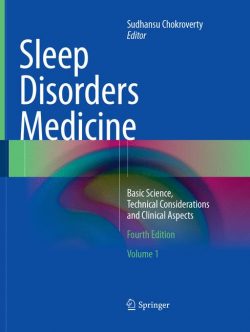This book presents an innovative approach to clinical assessment in psychiatry based on a number of psychopathological dimensions with a presumed underlying pathophysiology, that are related to fundamental phenomenological aspects and lie on a continuum from normality to pathology. It is described how the evaluation of these dimensions with a specific, validated rapid assessment instrument could easily integrate and enrich the classical diagnostic DSM-5 or ICD-10 assessment. The supplemental use of this dimensional approach can better capture the complexity underlying current categories of mental illness. The findings from a large patient sample suggest how this assessment could give a first glance at how variable and multifaceted the psychopathological components within a single diagnostic category can be, and thereby optimise diagnosis and treatment choices. Being short and easy to complete, this dimensional assessment can be done in a busy clinical setting, during an ordinary psychiatric visit, and in an acute clinical context, with limited effort by a minimally trained clinician. Therefore, it provides interesting and useful information without additional costs, and allows research work to be performed even in difficult settings.
Foreword.- Preface.- The Rapid Dimensional Assessment Scale (RADAS): development and applications in research.- Dimensional assessment with RADAS in clinical practice.- The Fear/Apprehension and Somatization/Somatic Preoccupation dimensions (psychic and somatic anxiety dimensions).- The Reality Distortion and Thought Disorganization dimensions.- Violence and compulsory treatment in the psychiatric setting.- The Sadness, Demoralization and Apathy dimensions.- The “outer dimensions” Activation, Impulsivity, Anger/Aggressiveness.- The Obsessive–compulsive dimension.- Psychopathological dimensions and the clinician’s subjective experience: a quantitative analysis.- The temporality dimension.
Massimo Biondi is full professor of psychiatry and head of the psychiatry residency program at the Sapienza University of Rome, Italy. He is also head of the Department of Neuroscience and Mental Health and of the psychiatric inpatient care unit at the Policlinico Umberto I Hospital in Rome. He has authored 30 books and more than 450 scientific papers on topics ranging from psychopathology to stress and psychosomatic medicine. He is editor-in-chief of the peer-reviewed journal “Rivista di Psichiatria”, indexed in PubMed/Medline.
Massimo Pasquini, MD, PhD, is an Associate Professor of Psychiatry at the Department Of Human Neurosciences – SAPIENZA University of Rome, Italy. He is also Coordinator of the Outpatient Service for Psycho-Oncology.He has authored or coauthored around 68 papers in international peer-reviewed journals (H index 19, Scopus 2018), as well as a number of book chapters. He has delivered many presentations and posters at national and international congresses.
Angelo Picardi is a psychiatrist and psychotherapist, currently working as researcher at the Centre for Behavioural Sciences and Mental Health of the Italian National Institute of Health in Rome, Italy. His main research topics are psychopathology, psychosomatic medicine, psychiatric epidemiology, attachment, alexithymia, and epilepsy. He has been Principal Investigator for several studies funded by the Italian Ministry of Health. He is author of 136 full papers published in international peer-reviewed journals, and his current H index is 36. He is an editorial board member of several peer-reviewed journals, including the Journal of Affective Disorders, Clinical Practice and Epidemiology in Mental Health, and Rivista di Psichiatria.
This book presents an innovative approach to clinical assessment in psychiatry based on a number of psychopathological dimensions with a presumed underlying pathophysiology, that are related to fundamental phenomenological aspects and lie on a continuum from normality to pathology. It is described how the evaluation of these dimensions with a specific, validated rapid assessment instrument could easily integrate and enrich the classical diagnostic DSM-5 or ICD-10 assessment. The supplemental use of this dimensional approach can better capture the complexity underlying current categories of mental illness. The findings from a large patient sample suggest how this assessment could give a first glance at how variable and multifaceted the psychopathological components within a single diagnostic category can be, and thereby optimise diagnosis and treatment choices. Being short and easy to complete, this dimensional assessment can be done in a busy clinical setting, during an ordinary psychiatric visit, and in an acute clinical context, with limited effort by a minimally trained clinician. Therefore, it provides interesting and useful information without additional costs, and allows research work to be performed even in difficult settings.
Proposes a descriptive approach to diagnostic assessment that goes beyond the DSM-5 classification
Leads to personalization of treatment
Attempts to link psychopathological dimensions with neurobiology
Proposes a descriptive approach to diagnostic assessment that goes beyond the DSM-5 classification
Leads to personalization of treatment
Attempts to link psychopathological dimensions with neurobiology





